-
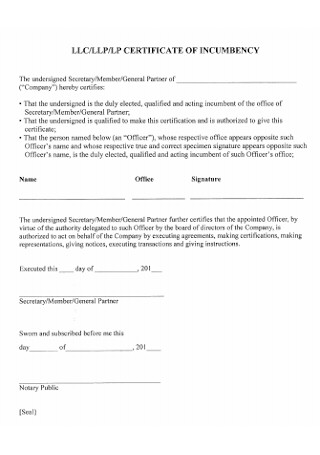
Office Certificate of Incumbency
download now -
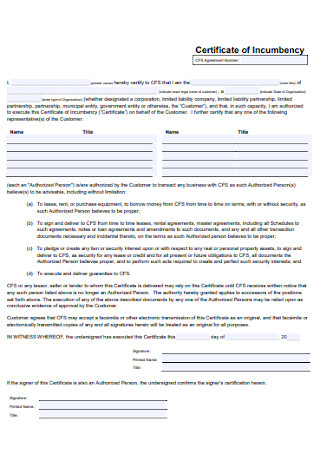
Financial Certificate of Incumbency
download now -
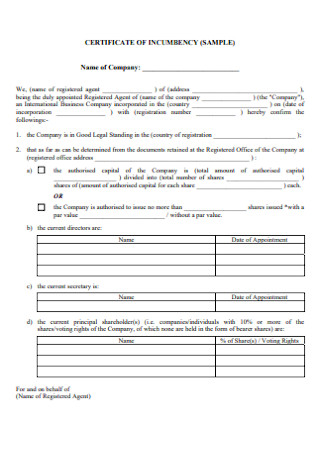
Sample Certificate of Incumbency
download now -

Certificate of Incumbency and Authority
download now -
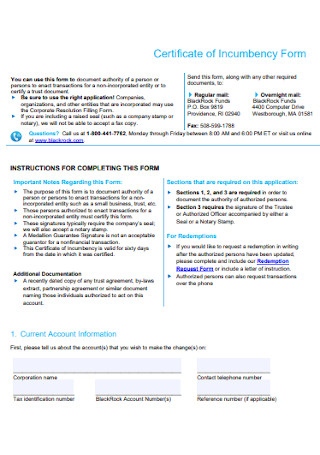
Certificate of Incumbency Form
download now -
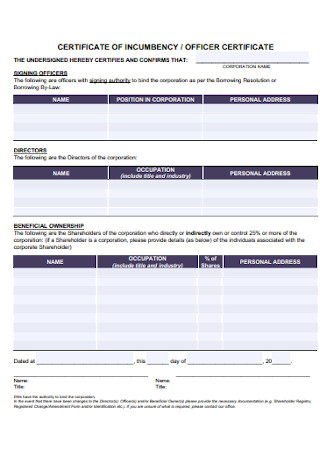
Officer Certificate of Incumbency
download now -
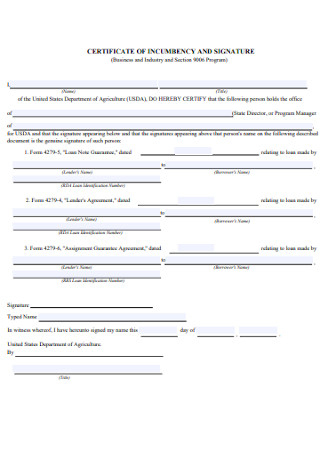
Certificate of Incumbency and Signature
download now -
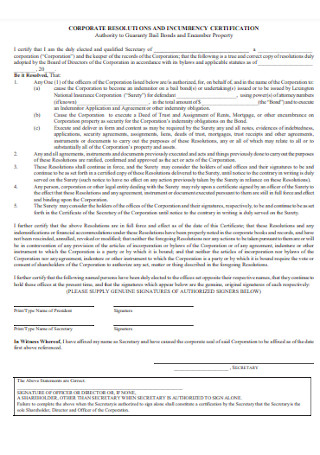
Corporate Resolution and Certificate of Incumbency
download now -
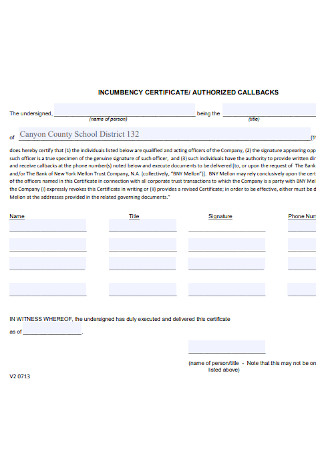
Certificate of Incumbency and Authorized Callbacks
download now -
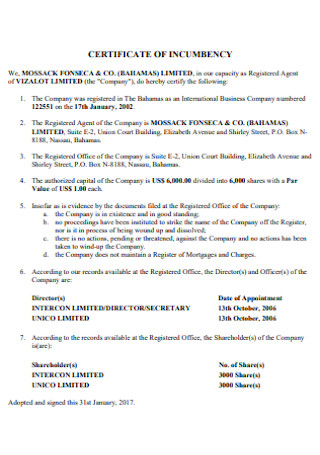
Certificate of Incumbency Format
download now -
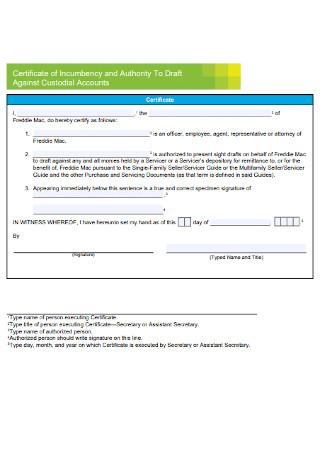
Certificate of Incumbency and Custodial Accounts
download now -
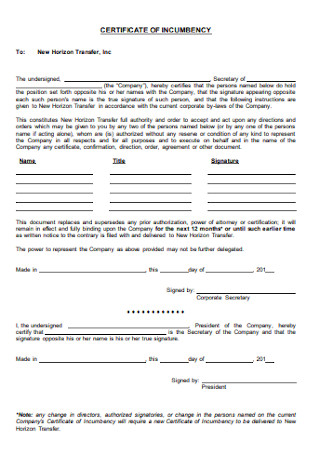
Basic Certificate of Incumbency
download now -
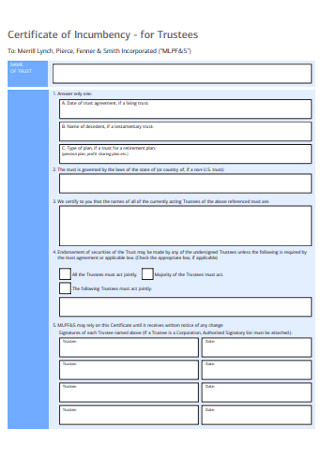
Certificate of Incumbency for Trustees
download now -

Certificate of Incumbency Schedule
download now -
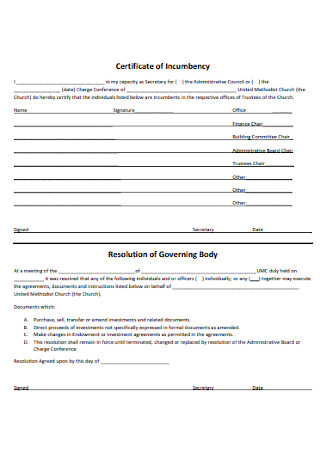
Certificate of Body Incumbency
download now -
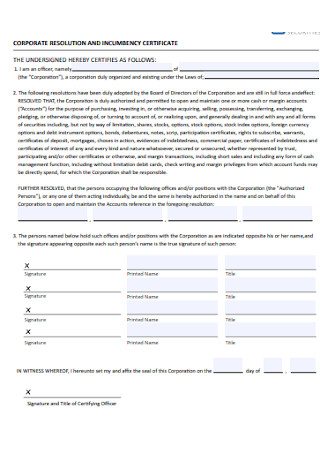
Sample Corporate Resolution and Certificate of Incumbency
download now -
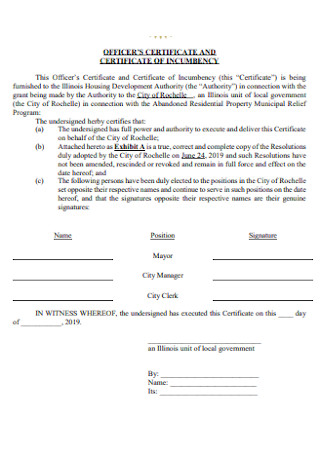
Officers Certificate of Incumbency
download now -
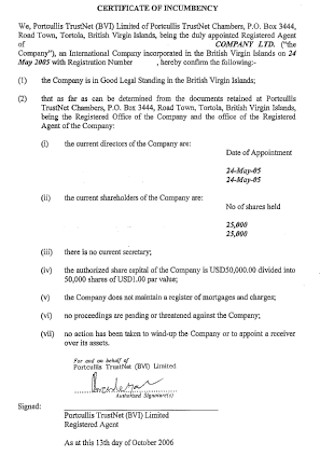
Formal Certificate of Incumbency
download now -
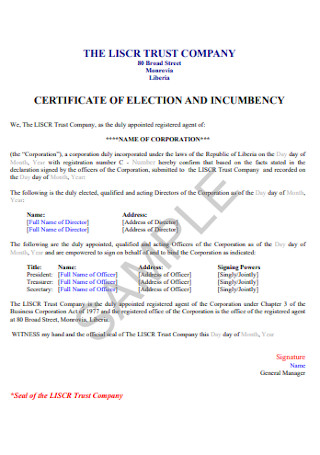
Certificate of Election Incumbency
download now -
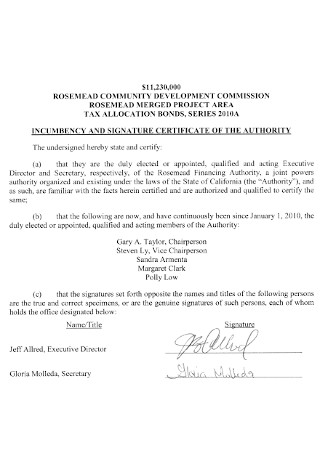
Incumbency and Signature Certificate of the Authority
download now -

Resolution and Certificate of Incumbency
download now -
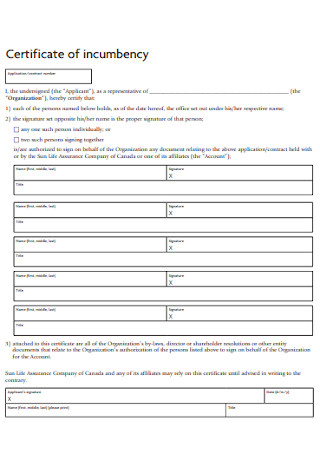
Standard Certificate of Incumbency
download now -

Certificate of Incumbency Offcial Signature
download now -
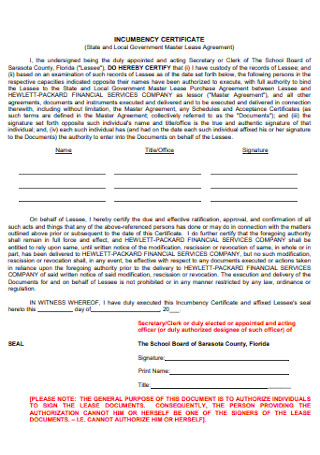
Certificate of Incumbency Agreement
download now -

Certificate of Incumbency Trustee
download now -
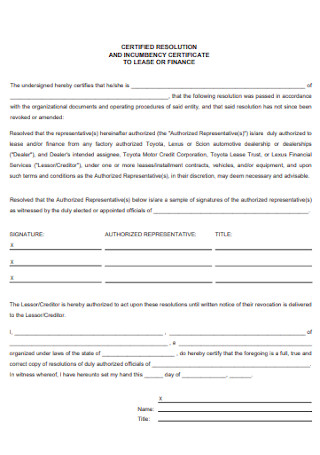
Certificate of Incumbency to Lease or Finance
download now -
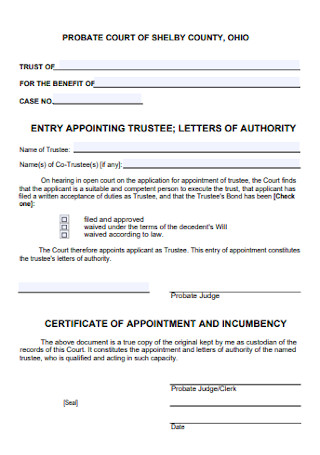
Certificate of Appointment Incumbency
download now -
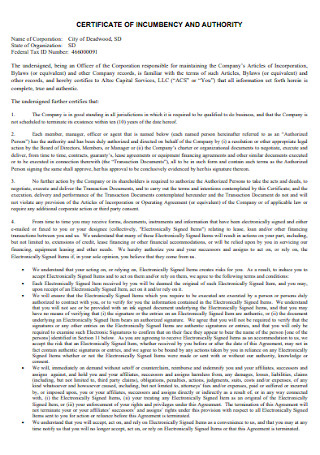
Certificate of Incumbency and Authority Example
download now -
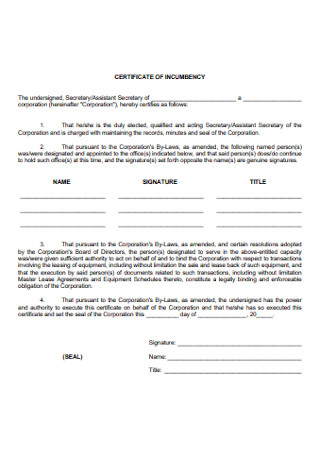
Printable Certificate of Incumbency
download now -
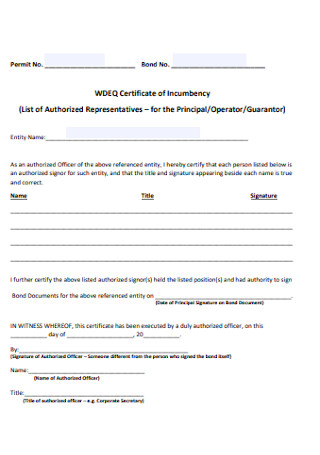
Annual Certificate of Incumbency
download now
FREE Certificate of Incumbency s to Download
What is a certificate of incumbency?
Elements of a Certificate of Incumbency
How to Ensure The Validity of a Certificate of Incumbency
FAQ
What other names are there for incumbency certificate?
Are witnesses needed in signing a certificate of incumbency?
Who requires a certificate of incumbency?
What is a certificate of incumbency?
A certificate of incumbency, or incumbency certificate, is a document that confirms an individual’s identity as a legitimate office holder in a certain LLC (limited liability company), firm or corporation. This is made by the corporation in order to officially announce its list of directors, key shareholders, or officers. Opened bank accounts, formulated legal contracts, or major transactions made by the corporation require this certificate in order to identify the validity of the exchange, especially of the faced signatories to confirm their respective positions and affirmation of the act itself.
Elements of a Certificate of Incumbency
A certificate of incumbency is not quite itself and at best acceptable and valid without the things that comprise it. The elements of this kind of certificate have to be concise and complete in order to adhere to regulations of respective state, hence why these are things that are prioritized and focused on by those who are starting up a company or LLC. The following are the important parts of a certificate of incumbency.
How to Ensure The Validity of a Certificate of Incumbency
For a document as significant and needed as a certificate of incumbency, there are processes to secure in order to make sure your certificate is legal, acceptable and real. Even for small corporations, and especially for start-up companies, it is strategic to craft it, keep it up to date, and guarantee that it has all the supporting forms and requirements in order to be admissible. Here are the key aspects to be looked out for when actualizing the certainty of the certificate of incumbency.
Step 1: Ask for a lawyer’s guidance
Even as early as obtaining your certificate, make sure legal assistance is present as to check and balance the decisions you make as a representative of the corporation. This means that if you ever have your certificate acquired from registered agents for instance, processing fees are made sure to be negotiated well, and that the corporation’s needs are ultimately met. Corporations usually order a certificate of incumbency from registered agents who do formulate the whole document, or make it themselves, but later on confirmed by the registered agent. With that said, an affidavit is usually attached with the document made by the registered agent as the two entities work hand in hand in making sure that the certificate is structured and generated well and with respect to the corporation’s system as a whole. Generally, it is strategic to have a lawyer around in order for things to go smoothly in the long run, as their expertise is a bliss to your company.
Step 2: Have it backed up by the secretary
The secretary has the biggest role in the cinematic universe of this very important document. As mentioned in the required elements of a certificate of incumbency, the secretary has to give their word that the information contained in the document are all true to life. The secretary has the first say to solidify such document, hence the undersign, and being the one to commence it in the first place. Keeping records, the incumbency certificate specifically in this case, is one of a secretary’s major tasks, which is why they carry this power in sealing a corporation’s necessity.
Step 3: Have it notarized
We have to question—when do we have something notarized? Notarization is important when you as an entity ought to prevent fraud especially when dealing with high level forms or contracts such as the certificate we are dealing with. Although it is not required depending on where you live, having your incumbency receipt notarized provides further legal backing and crystallizes it as a whole, and in this way, it is far easier to validate the identity of your corporation, or its representatives. Notaries are an announcement of something, and a shout of exclusivity or ownership of specific things, such as your identity in identification cards when lost, for instance.
Step 4: Secure the minute book
The history book of academics is the minute book of the corporation. This contains a plethora of corporate records and forms, including a trail way of previous to present executives, key shareholders, officers, board of directors, and the like. All revisions of the incumbency certificate by virtue of keeping it up to date is also present in the minute book. It is important to guarantee that this document is recorded in the minute book in order for possible complications in the future to be tracked better and accounted for with less hassle. The document’s reflection in the minute book is also a formality of the corporation in and of itself.
FAQ
What other names are there for incumbency certificate?
The certificate of incumbency has many names known by various people. With that said, the document may also be referred to as secretary’s certificate, officers’ certificate, register of directors, or certificate of directives.
Are witnesses needed in signing a certificate of incumbency?
The secretary already confirms the validity of the constituents in the certificate of incumbency, hence, it is not really needed to have witnesses. As safety net, there are other ways of proving the legitimacy of the document, such as the sample signatures used as a point of comparison with those of the signatories of certain deals, contracts, or accounts.
Who requires a certificate of incumbency?
A lot of actions made by the corporation warrant a certificate of incumbency. But to name some, usually, international business partners require such, but contract deals, bank account, and other local transactions ask for one as well for confirmation and legalities.
When adulting, your life now only becomes recognizable to the public eye when it is reflected on paper, more so when you exist within the corporate world. Documents such as the certificate of incumbency are a necessity for corporations or LLCs, hence new institutions should not think twice on obtaining one. Unlike the population of internet users, the corporate world requires utmost explicitness and validity in order for things to push through because identity, professional standing, and safety are always on the line and are simply a gamble should the necessities fail to be prioritized. Confirmation, traceability, accountability, and legal binding are the fallback. I guess it’s safe to say, this world just inherently needs exclusive and legitimate identification.
